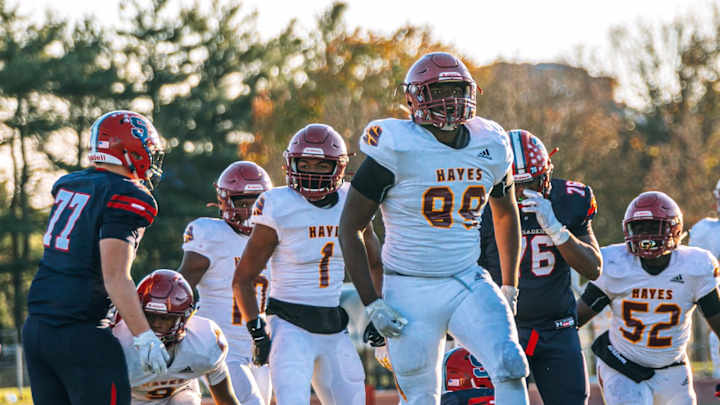How the Pandemic Impacts Future Recruiting Classes

The NCAA made the decision that football players will not have 2020 count against their eligibility, regardless of how many games they participate in. While on its surface this seems like a smart, reasonable decision, there will be ramifications for years to come.
Essentially, next year for the 2021 season, those who are seniors this year and elect to return, will not count against the 85 scholarship limit. However, in 2022, numbers have to be back to the normal 85 with all scholarship players counting against that number. Even those who would have otherwise graduated after the 2021 season if not for the pandemic.
Syracuse has 14 seniors or redshirt seniors on the current roster. Syracuse is around 83 or 84 scholarship players right now, and currently has 21 players coming in for the 2021 class. Given those numbers, the next few recruiting cycles could force Syracuse to take very small classes.
Look at the 2022 cycle. Syracuse will be at around 104 scholarship players without any players leaving. In almost every offseason, there is some attrition with players electing to transfer or leave for other reasons. That will certainly impact the numbers. Let's assume an average off five leave per offseason for the sake of this exercise.
If Syracuse is at 100 scholarship players for the 2021 season, to use round numbers, they will lose those 14 seniors that would have exhausted their eligibility after the 2020 season. That drops Syracuse to 86 scholarship players. With the average attrition of five departures due to transfer, that puts Syracuse around 81 scholarship players, meaning they can bring in four players in the 2022 class to get to the 85 limit.
After the 2022 season, Syracuse is scheduled to lose approximately 17 players. If you take those away from the 85, and assume another five in offseason attrition, that puts Syracuse at 63 scholarship players for the 2023 campaign. That would allow Syracuse to take 22 players in the 2023 class, which is in line with a normal class.
But it does not end there. That four scholarship class in 2022 will be felt down the line. Those four will leave after the 2025 or 2026 season, depending on their redshirt situations. After normal classes in 2023, 2024 and 2025, Syracuse would be faced with only losing those four players to graduation, or fewer if some redshirt, for the 2026 class. With normal attrition of five players, they would have nine slots available for the 2026 cycle. Still far fewer than normal.
This will repeat itself every four years unless other mitigating actions are taken. Actions such as forcing several players out during one of those impacted offseasons in order to get the number closer to normal. Or taking a few fewer in each class and dealing with three, four or five scholarships fewer in each of the three recruiting classes leading up to the affected 2026 cycle. That way you have normalized numbers for that cycle. Without that, it may not be until the 2030 class, where losing nine players potentially plus the normal five in offseason attrition, would create 14 available scholarships and a class that, while still small, looks much more normal than 2022 or 2026.
This situation is not unique to Syracuse. Schools across the country will be dealing with the same circumstances. The potential number crunch for the 2022 recruiting class could lead to fewer high school players making the leap to college than ever before. The trickle down effect will lead to high school players who otherwise would have had scholarship collegiate opportunities being forced to go the preferred walk-on route or perhaps losing that opportunity altogether.
It will inevitably lead to some schools forcing players out in order to restock with talented recruits. With the potential for the NCAA to pass the one-time transfer rule during the next offseason, the transfer portal will add another complicated layer to the scholarship situation.

Title: Publisher All Syracuse Education: Roberts Wesleyan College Location: Syracuse, New York Expertise: Syracuse basketball, football and recruiting. EXPERIENCE Mike McAllister has been covering Syracuse basketball, football and recruiting for more than a decade. Mike's career started with his own free blog as a way to vent following sporting events. Shortly thereafter, a network of basketball sites called Coast 2 Coast Hoops asked him to run their Syracuse site. That site was called Nation of Orange, and Mike quickly established it as a go-to for Syracuse fans. After running Nation of Orange for several months, a position with the Syracuse site on the Scout network became available. After one year as the recruiting expert with Cuse Nation, he was named the publisher. Mike oversaw the transition from Scout to 247Sports, and ran the site on that network for years. Presented with the opportunity to join one of the biggest names in the sports journalism industry, Sports Illustrated, Mike jumped at the chance. All Syracuse was started from scratch by Mike and the Fan Nation team. It has now become a staple for Orange fans of various sports. Mike has broken news on recruiting, Syracuse basketball and football team information and has established himself as the top recruiting inside in the market. He has appeared on local radio shows, television broadcasts, national radio shows and much more. Mr. McAllister has a Bachelor of Science Degree in Accounting and Information Management from Roberts Wesleyan College.
Follow McAllisterMike1